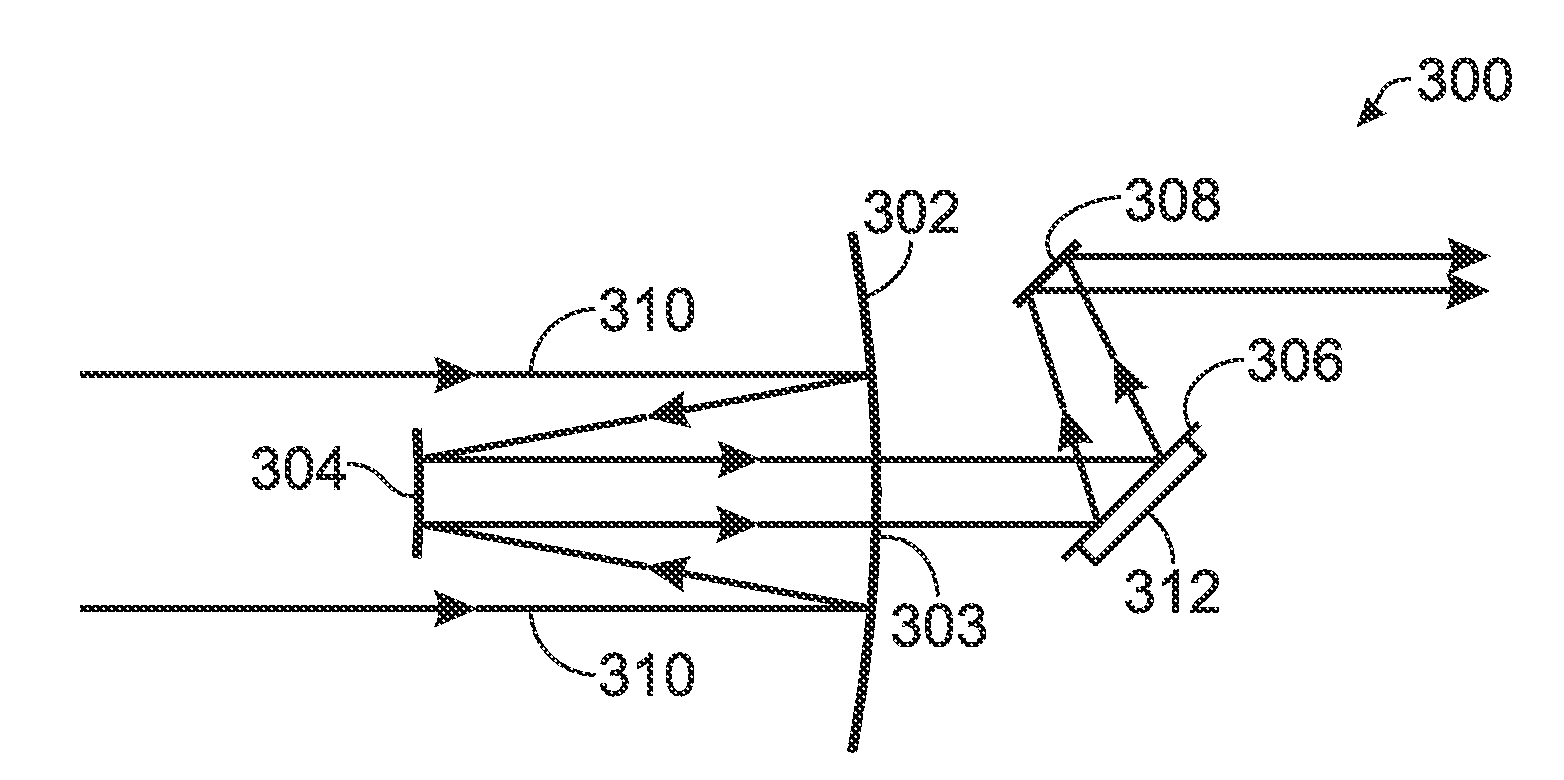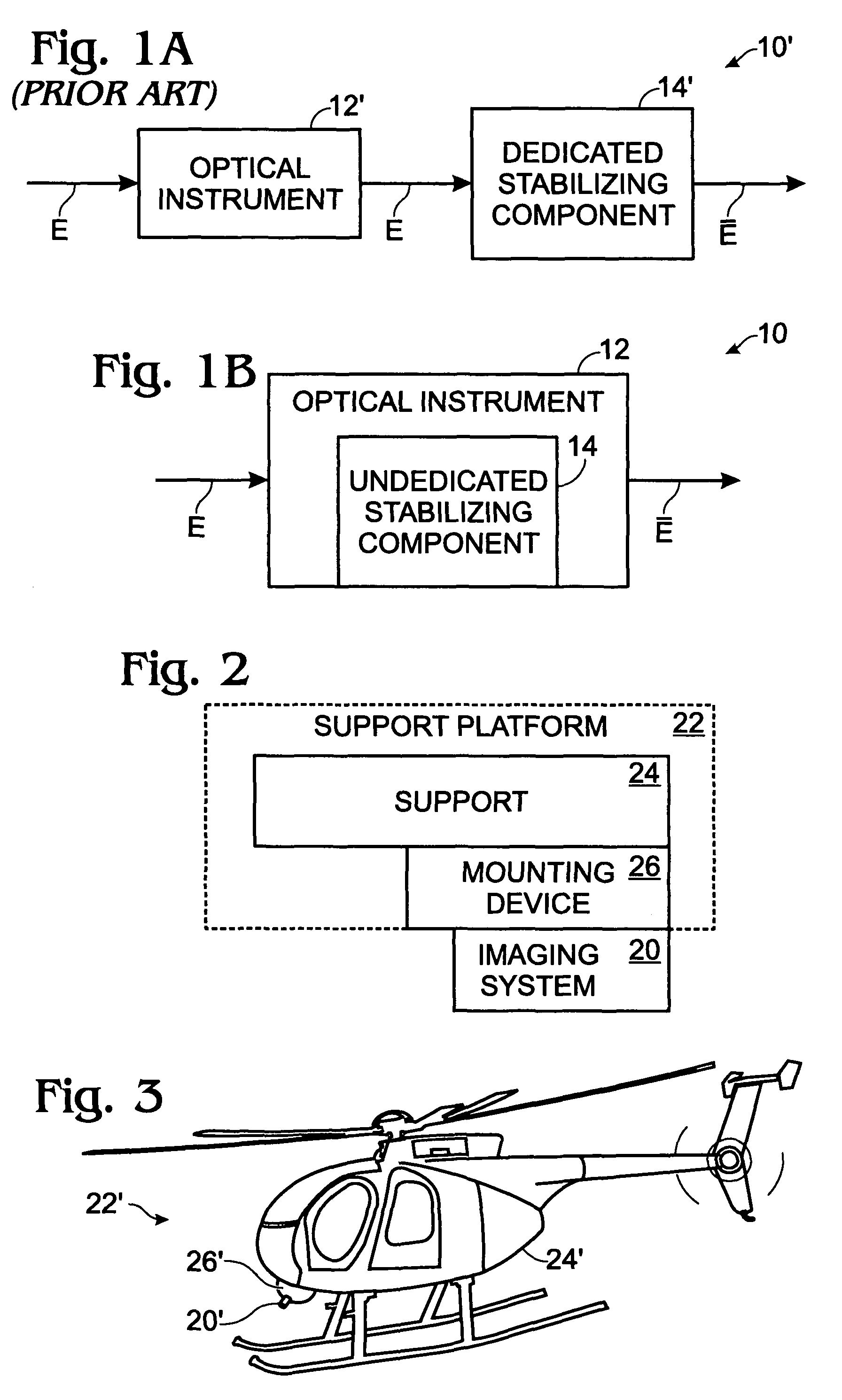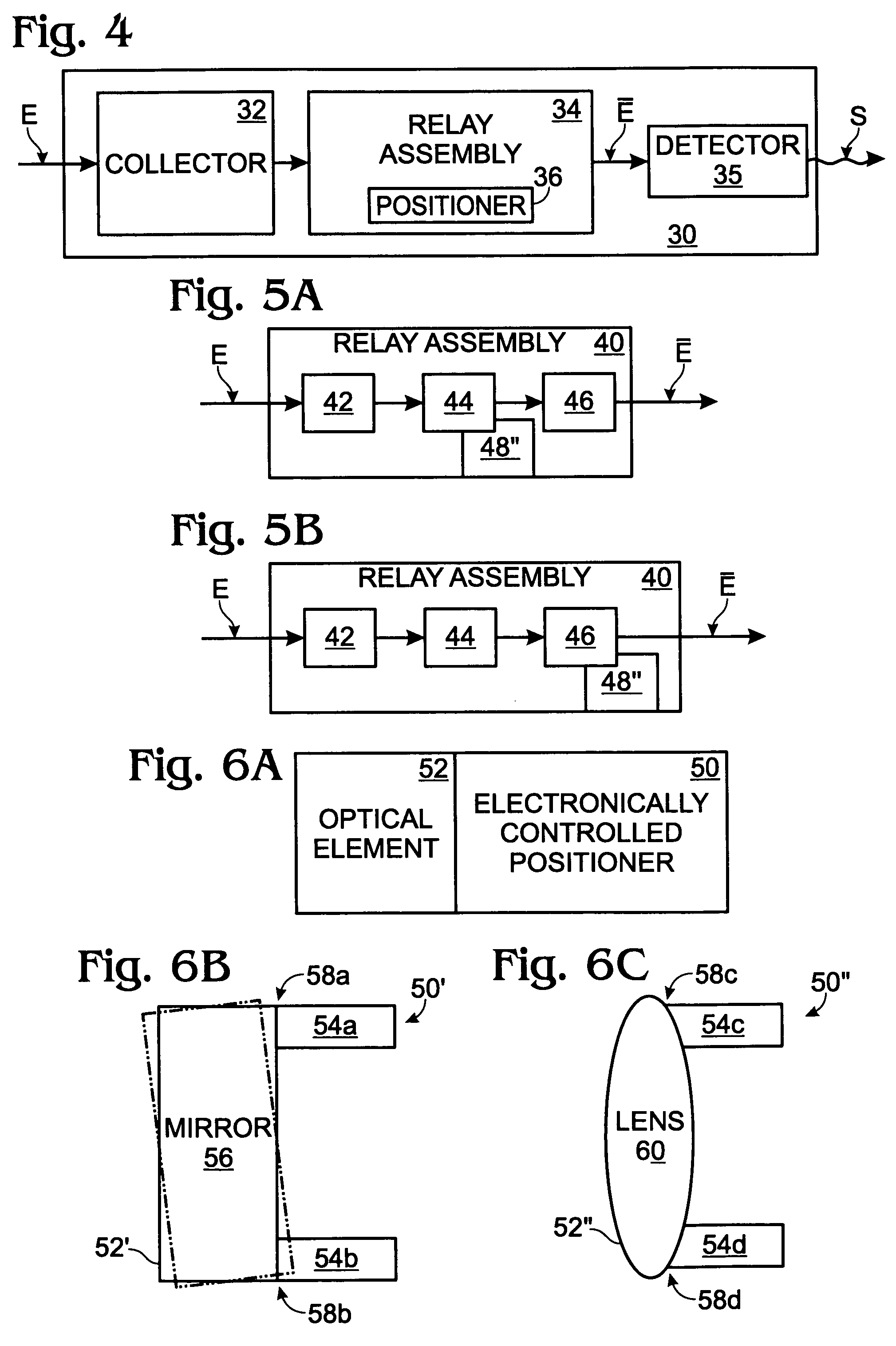Image detection improvement via compensatory high frequency motions of an undedicated mirror
a high frequency motion and undedicated mirror technology, applied in the field of image detection improvement, can solve the problems of blurred images of moving objects, lack of clarity or detail, and image acquisition from moving platforms such as airborne platforms mounted to airplanes, helicopters, satellites, etc., to improve image resolution and improve image tracking
- Summary
- Abstract
- Description
- Claims
- Application Information
AI Technical Summary
Benefits of technology
Problems solved by technology
Method used
Image
Examples
example 1
[0082]This example describes an exemplary off-axis, three-mirror assembly imaging system, constructed in accordance with aspects of the present teachings; see FIG. 8.
[0083]FIG. 8 shows a portion of an exemplary three-mirror assembly imaging system 200. The system includes a primary mirror 202, a secondary mirror 204, and a tertiary mirror 206 functioning as an undedicated optical stabilization component. The position of the tertiary mirror may be adjusted by a positioner 208, such as a piezoelectric positioner, as described above. In other embodiments, the position of the primary and secondary mirrors, or combinations of the primary, secondary, and tertiary mirrors, may be adjusted by suitable positioners. Here, unstabilized image data, represented as rays by the directional arrows arriving at primary mirror 202, may be stabilized by the motions of tertiary mirror 206. Specifically, positioner 208 is configured to control the position and orientation of the tertiary mirror 206 in ti...
example 2
[0084]This example describes several exemplary multi-band energy channels, suitable for use in an imaging system constructed in accordance with aspects of the present teachings; see FIGS. 9-11. Imaging energy can be stabilized and / or dithered, in accordance with the present disclosure, using virtually any multi-band energy channel that includes at least one optical element suitable for selective movement. In general, reflective elements, such as mirrors, are particularly well suited to move to stabilize and / or dither imaging energy. In the following exemplary channels, stabilization and / or dithering may be effected by selectively moving any of the illustrated optical components, relative to other components of the same channel.
[0085]FIG. 9 shows an exemplary Cassegrain telescope 300. The telescope includes a primary mirror 302 haying a centrally located aperture 303, a secondary mirror 304, a tertiary mirror 306, and a quaternary mirror 308. The optical path for various incident lig...
example 3
[0088]This example describes additional image stabilization systems, constructed in accordance with aspects of the present teachings. Specifically, the systems described herein optionally may be combined with other systems for improving image acquisition and / or quality, including hardware and / or software systems, for example, as described in U.S. patent application Ser. No. 11 / 207,536, filed Aug. 19, 2005, which is incorporated herein by reference in its entirety for all purposes.
PUM
 Login to View More
Login to View More Abstract
Description
Claims
Application Information
 Login to View More
Login to View More - R&D
- Intellectual Property
- Life Sciences
- Materials
- Tech Scout
- Unparalleled Data Quality
- Higher Quality Content
- 60% Fewer Hallucinations
Browse by: Latest US Patents, China's latest patents, Technical Efficacy Thesaurus, Application Domain, Technology Topic, Popular Technical Reports.
© 2025 PatSnap. All rights reserved.Legal|Privacy policy|Modern Slavery Act Transparency Statement|Sitemap|About US| Contact US: help@patsnap.com



